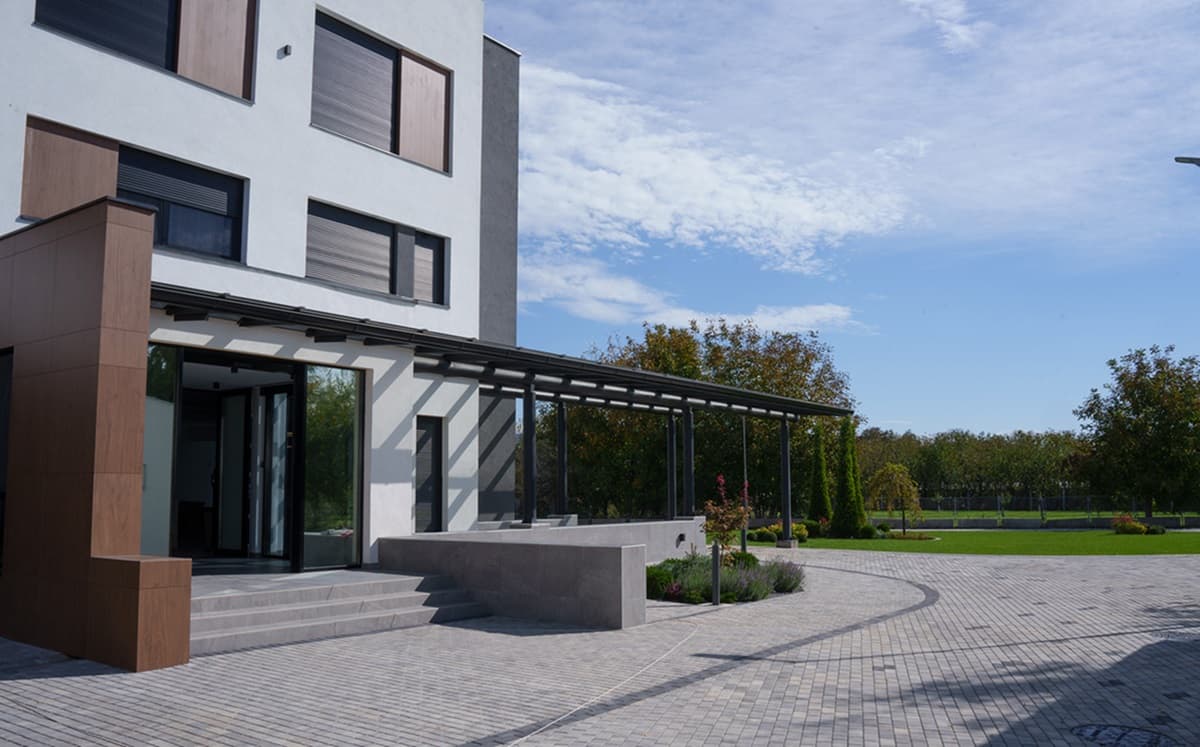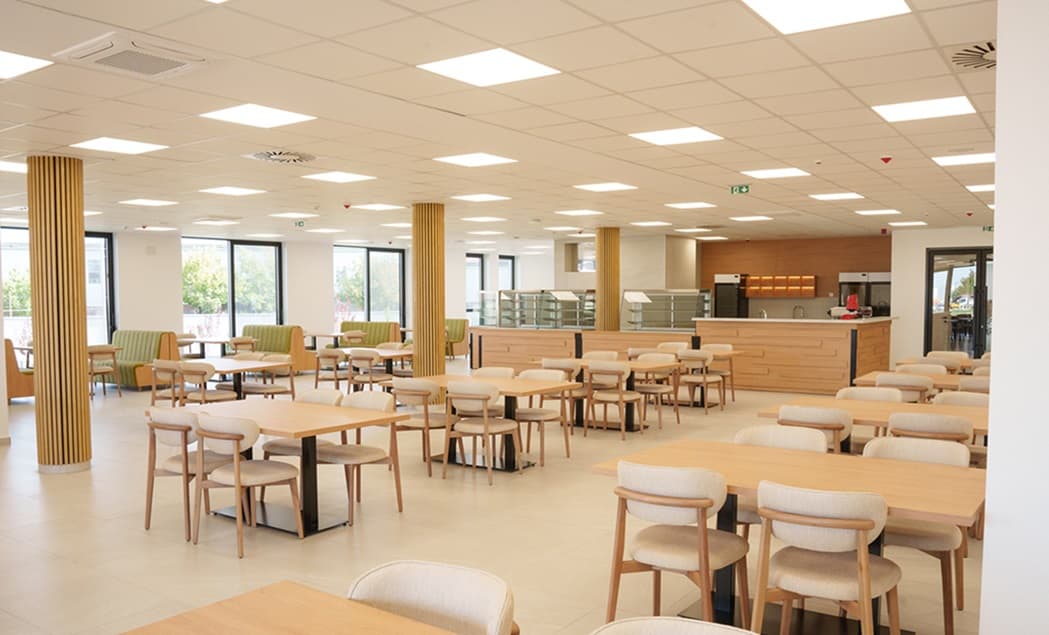Stem cell therapy is a treatment that uses the body’s natural regenerative cells to repair and restore damaged tissues. They can help with a wide range of conditions—from chronic diseases to aesthetic concerns. This therapy supports the immune system, reduces inflammation, and supports healing, offering new possibilities for better health and well-being. In this guide, we’ll explore what is stem cell treatment, what do stem cells treat, how much it costs, and where you can receive it.
What Is Stem Cell Treatment?
Stem cell regenerative treatment harnesses the body’s natural healing abilities to restore and promote repair of the damaged tissues. Depending on the condition, treatment can involve direct injections, IV infusions, or targeted applications. This approach offers potential benefits for both medical conditions and aesthetic treatments.
The role of stem cells in regenerative medicine
Treatments using stem cells help regulate immune responses, reduce inflammation, and enhance the body’s self-repair processes, paving the way for innovative therapies that support long-term healing and recovery.
How stem cell treatment works
Advantages of stem cell treatment unfold through multiple mechanisms.
- Stem cells release biologically active molecules, such as growth factors, that stimulate repair, reduce inflammation, and support tissue repair. This process improves blood circulation, boosts collagen production, and accelerates healing, making stem cell therapy valuable for both medical and aesthetic treatments.
- Additionally, stem cells release exosomes and microvesicles, which deliver proteins, RNA, and other factors to aid tissue repair and regulate inflammation.
- Treatments using stem cells also help balance the immune system, shifting it from a pro-inflammatory to an anti-inflammatory state, benefiting conditions linked to autoimmunity and chronic inflammation.
- Moreover, stem cell therapy promotes new blood vessel formation, improving oxygen and nutrient delivery to tissues.
Stem cell treatment vs. traditional treatments
| Treatment type | Mechanism | Duration of results | Invasiveness | Potential risks |
| Stem cell treatment | Regenerates tissues, modulates immune system | Long-lasting, often several years | Minimally invasive | Mild and short-term side effects |
| Traditional medications | Manage symptoms, often through chemical intervention | Variable, depends on treatment | Non-invasive to minimally invasive | Side effects like nausea, dizziness |
| Surgical interventions | Direct repair or replacement of damaged tissues | Immediate results, but recovery time varies | Highly invasive | Surgical complications, scarring |
| Physical therapy | Enhances mobility and strength through exercise | Gradual improvement over time | Non-invasive | Muscle strain, overexertion |
Advantages of Stem Cell Treatment
Stem cell treatment offers several advantages in regenerative medicine and tissue repair.
- It helps stimulate tissue repair, reduce pain, and manage inflammation, often reducing the need for pain medications.
- Most stem cell regenerative treatments are minimally invasive, allowing patients to quickly return to their normal activities.
- As many stem cell treatments do not require surgery, they carry a lower risk of surgical complications.
- Additionally, the immunomodulatory benefits of stem cell treatment makes them beneficial in managing conditions like autoimmune diseases.
Medical Conditions That Can Be Treated With Stem Cells
Stem cell therapy is being explored for various conditions due to its ability to reduce inflammation, regulate the immune system, and support tissue repair. Below are some conditions where stem cell treatments have shown promise.
Neurological disorders
Stem cells may help create a healthier environment for brain function.
Parkinson’s disease
Stem cell treatment for Parkinson’s helps reduce inflammation in the brain and supports nerve cell repair, potentially improving movement, reducing symptoms, and slowing disease progression.
Alzheimer’s disease
Using stem cell therapy for Alzheimer’s can reduce brain inflammation, protect nerve cells, and promote repair, possibly slowing cognitive decline and helping patients maintain independence.
Stroke recovery
Stem cells aid in promoting recovery, improving brain function, and enhancing mobility, such as finger movement and limb control.
Autoimmune diseases
Stem cells can help regulate the immune system and repair tissue damage caused by autoimmune conditions.
Multiple Sclerosis (MS)
Treatments using stem cells help prevent the immune system from attacking nerve fibers, reduce inflammation, ease pain, and restore movement and coordination.
Rheumatoid Arthritis (RA)
Stem cells may repair joint tissues, reduce inflammation, slow joint damage, and improve mobility—potentially reducing the need for painkillers and steroids.
Orthopedic and joint disorders
Stem cell treatment may help with tissue repair and inflammation reduction in musculoskeletal conditions.
Osteoarthritis
Stem cells can reduce joint pain, decrease inflammation, and promote cartilage repair, improving mobility.
Spinal cord injuries
Stem cell injections for spinal cord injuries have shown potential in reducing inflammation, managing pain, and improving motor and sensory functions.
Cardiovascular diseases
Stem cells treatment may support heart and blood vessel repair, reducing inflammation and improving circulation.
Anti-aging and wellness
Stem cell therapy for anti-aging is used in regenerative treatments for:
- Skin health and rejuvenation
- Improved joint mobility
- Boosting vitality and overall well-being
By harnessing the body’s natural healing abilities, stem cell therapy offers hope for a wide range of conditions, potentially improving quality of life and long-term health.

Get a free online consultation
Not sure if stem cell therapy is right for you? Get a free, no-obligation consultation with one of our medical specialists.

Medical Advisor, Swiss Medica doctor
Choosing the Right Clinic for Stem Cell Treatment
Selecting the right clinic for adult stem cell therapy is an important decision that requires careful consideration. Here are some key steps to help you make an informed choice and find the best stem cell treatment.
1. Research the clinics
Compare clinics based on the range of treatments offered, and patient reviews. Look for clinics with a solid reputation and a track record of successful, result-oriented therapies.
2. Consult with experts
Speak with stem cell specialists who can help you determine the most effective stem cell treatments for your specific condition. Their expertise will guide you toward the best approach for your needs.
3. Prepare questions
Before your consultation, make a list of important questions to ask, such as:
- What are potential advantages of stem cells to treat diseases?
- What are the treatment protocols?
- How can adult stem cells benefit your condition?
- What safety measures are in place?
- What are the costs?
Why choose Swiss Medica?
At Swiss Medica, we offer one of the best stem cell treatments in a patient-centered environment, providing highly individualized care and regenerative solutions. Here’s what you can expect from us:
- Discuss your condition, ask questions, and explore your treatment options during a no-obligation consultation.
- Treatment plans and types of stem cell treatments are tailored to meet your specific needs and goals.
- We offer a variety of current stem cell treatments and administration methods to ensure the best results.
- We follow strict protocols to ensure the purity, safety, and efficacy of our stem cells.
- Our doctors are highly trained in regenerative medicine, with years of experience in stem cell therapy.
- We provide assistance with accommodation, airport transfers, and ongoing consultations to ensure a smooth experience at our facility.
- Our medical facilities in Serbia are easily accessible with direct flights from major cities worldwide.
- Our advanced in-house lab ensures accurate preparation and dosing for optimal therapeutic benefits.
- Our team monitors your progress throughout treatment, ensuring the best possible recovery and outcomes.
Many patients report significant pain relief, improved mobility, an enhanced quality of life following stem cell therapy at Swiss Medica.
Our new hospital in Belgrade provides a patient-centered environment for advanced stem cell therapy for various conditions.
Types of Stem Cells Used in Treatment
At Swiss Medica we use safe and effective types of stem cell treatments:
- Mesenchymal stem cells (MSCs): Found in bone marrow, adipose tissue, and the umbilical cord, MSCs can differentiate into bone, cartilage, muscle, and fat cells. Among the benefits of stem cell treatments are anti-inflammatory and regenerative properties, which make them widely used in anti-aging, joint therapy, and tissue repair.
- Neural stem cells (NSCs): Found in the brain and spinal cord, NSCs are being explored and used for treating neurodegenerative diseases like Parkinson’s and multiple sclerosis. At Swiss Medica, we utilize NSCs, which are derived in our laboratory from bone marrow mesenchymal stem cells.
How Stem Cell Therapy Is Performed?
A stem cell treatment follows several key steps, from collecting and preparing the cells to administering them and ensuring proper recovery.
Stem cell collection and preparation
Stem cells are collected from sources such as:
- Bone marrow;
- Adipose tissue (fat);
- Umbilical cord tissue;
- Placenta.
The best source depends on the condition being treated. For autologous stem cells (patient’s own cells), the collection process is usually done under local anesthesia to minimize discomfort. After collection, the stem cells are processed and expanded in a lab to ensure a sufficient number of cells for effective treatment.
Injection methods and administration
Stem cells can be delivered in different ways, depending on the condition:
- Intravenous (IV) infusion – A common method for systemic conditions;
- Intramuscular injection – Injected directly into muscle tissue;
- Intra-articular injection – For joint disorders, injected into the affected joint;
- Intrathecal injection – For neurological conditions, injected into the spinal canal.
Some procedures use ultrasound or other imaging techniques to ensure precise placement of the stem cells.
Post-treatment recovery and follow-up
After the treatment using stem cells, patients are typically advised to rest for a few days and avoid strenuous activities. Most side effects, if any, are mild and temporary. Regular follow-ups help monitor progress, adjust treatment if necessary, and ensure the best possible outcomes.
How Much Does Stem Cell Treatment Cost?
The cost of stem cell therapy varies depending on the type of treatment, the severity of the condition, and the treatment location.
- Basic treatments, such as localized injections for orthopedic disorders like joint pain, typically start from €3,500 to €6,000.
- Middle-range treatments for more general conditions, such as osteoarthritis, can cost between €5,000 and €15,000.
- More complex treatments for autoimmune disorders or serious diseases, which often involve IV therapies or advanced procedures, range from €15,000 to €30,000 or more.
- Some of the most advanced stem cell therapies can cost up to €50,000, depending on the clinic and its treatment protocols.
At Swiss Medica, stem cell therapies are available in one comprehensive package, with prices ranging from €7,000 to €31,000*, based on the doctor’s recommendations.
*The prices mentioned are indicative and subject to change based on individual factors, including the condition’s severity and the number of stem cells needed. Prices are valid as of January 2025.
Risks and Considerations in Stem Cell Therapy
Mesenchymal stem cells are considered to have minimal risks. Common side effects following stem cell treatment are mild and temporary, including fatigue, headaches, chills, nausea, and mild fever. Some patients may experience localized pain, redness, or swelling due to infection, but these symptoms typically resolve quickly.
In contrast, other stem cell types present more significant risks. Embryonic stem cells (ESCs) raise ethical concerns, as their use requires the destruction of embryos. They are still in the experimental phase and carry risks such as rejection and uncontrolled cell growth, which could lead to tumors. Hematopoietic stem cells (HSCs), commonly used in bone marrow transplants for blood disorders, have limited regenerative capabilities and are not widely applicable in anti-aging or regenerative medicine. They also pose risks such as graft-versus-host disease (GVHD) when derived from a donor.
MSC therapy, however, is regarded as the safest and most effective option for regenerative medicine. They do not raise ethical issues, have a low risk of rejection or tumor formation compared to ESCs. The advantages of stem cells to treat diseases have made MSCs therapy a promising option for both therapeutic and anti-aging treatments.
Contact us
To learn about the expected results of stem cell therapy in your case, as well as details about the cost and duration of treatment, just fill out the form below.

Medical Advisor, Swiss Medica doctor
Frequently Asked Questions About Stem Cell Treatment
1. Will I need any medications or supplements after treatment?
Typically, medications are not prescribed as part of stem cell therapy, but supplements may be recommended to enhance the body’s natural stem cell production.
2. How long does it take to see results from stem cell treatment?
Results can vary, but some patients report improvements within days to weeks after treatment. Full recovery and optimal results often take several weeks to months.
3. What are the risks of undergoing unproven stem cell treatments?
Using stem cell treatment for diseases is generally safe and carries low risks. Patients may experience mild side effects and discomfort after the treatment, but they are short-term.
List of References:
Wang, F., Sun, Z., Peng, D. et al. Cell-therapy for Parkinson’s disease: a systematic review and meta-analysis. J Transl Med 21, 601 (2023). https://doi.org/10.1186/s12967-023-04484-x
Cao, Z., Kong, F., Ding, J. et al. Promoting Alzheimer’s disease research and therapy with stem cell technology. Stem Cell Res Ther 15, 136 (2024). https://doi.org/10.1186/s13287-024-03737-w
Panos LD, Bargiotas P, Arnold M, Hadjigeorgiou G, Panos GD. Revolutionizing Stroke Recovery: Unveiling the Promise of Stem Cell Therapy. Drug Des Devel Ther. 2024;18:991-1006
https://doi.org/10.2147/DDDT.S460998Jasim, S.A., Yumashev, A.V., Abdelbasset, W.K. et al. Shining the light on clinical application of mesenchymal stem cell therapy in autoimmune diseases. Stem Cell Res Ther 13, 101 (2022). https://doi.org/10.1186/s13287-022-02782-7
Shimizu Y, Ntege EH, Azuma C, Uehara F, Toma T, Higa K, Yabiku H, Matsuura N, Inoue Y, Sunami H. Management of Rheumatoid Arthritis: Possibilities and Challenges of Mesenchymal Stromal/Stem Cell-Based Therapies. Cells. 2023 Jul 21;12(14):1905. doi: 10.3390/cells12141905. PMID: 37508569; PMCID: PMC10378234.
Bakinowska, E.; Kiełbowski, K.; Boboryko, D.; Bratborska, A.W.; Olejnik-Wojciechowska, J.; Rusiński, M.; Pawlik, A. The Role of Stem Cells in the Treatment of Cardiovascular Diseases. Int. J. Mol. Sci. 2024, 25, 3901. https://doi.org/10.3390/ijms25073901
El Assaad N, Chebly A, Salame R, Achkar R, Bou Atme N, Akouch K, Rafoul P, Hanna C, Abou Zeid S, Ghosn M, Khalil C. Anti-aging based on stem cell therapy: A scoping review. World J Exp Med. 2024 Sep 20;14(3):97233. doi: 10.5493/wjem.v14.i3.97233. PMID: 39312703; PMCID: PMC11372738.
Bydon, M., Qu, W., Moinuddin, F.M. et al. Intrathecal delivery of adipose-derived mesenchymal stem cells in traumatic spinal cord injury: Phase I trial. Nat Commun 15, 2201 (2024). https://doi.org/10.1038/s41467-024-46259-y
Lo B, Parham L. Ethical issues in stem cell research. Endocr Rev. 2009 May;30(3):204-13. doi: 10.1210/er.2008-0031. Epub 2009 Apr 14. PMID: 19366754; PMCID: PMC2726839.
Chen J, Wang H, Lu X, Yang K, Lu C. Safety and efficacy of stem cell therapy: an overview protocol on published meta-analyses and evidence mapping. Ann Transl Med. 2021 Feb;9(3):270. doi: 10.21037/atm-20-6892. PMID: 33708897; PMCID: PMC7940926.
MD, Pediatrician, Regenerative Medicine Specialist











